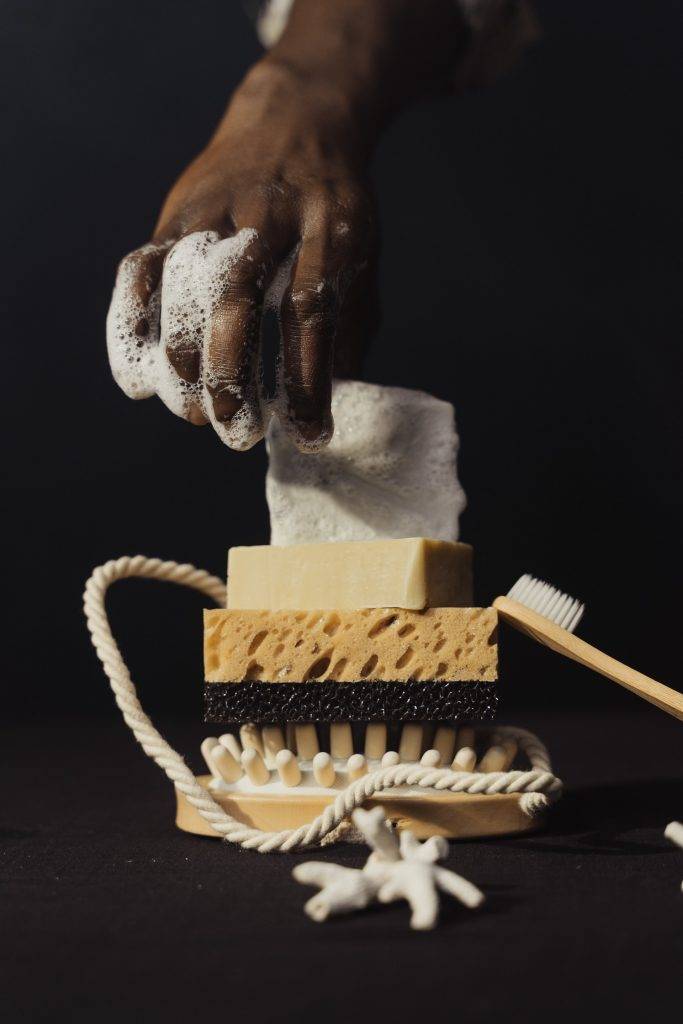How is a Bath Sponge Made?

Bath sponges are a common bathroom accessory used for cleaning and exfoliating the skin. They are made from a variety of natural and synthetic materials, and their production involves several steps.
Here is an in-depth look at how bath sponges are made:
Types of Bath Sponges
Bath sponges can be made from a variety of materials, including natural materials like sea sponges and synthetic materials like foam and nylon.
Sea sponges are a type of sponge that is found in the ocean and is made from a porous, spongy material called spongin. These sponges are harvested from the ocean floor and are then processed and cleaned for use as bath sponges.
Synthetic bath sponges, on the other hand, are made from materials like foam or nylon. These sponges are often more durable and easier to clean than natural sponges, but they may not be as environmentally friendly.
Harvesting and Processing Natural Sponges
If a bath sponge is made from natural materials, the first step in its production is harvesting the sponge from the ocean. This is typically done by divers who carefully collect the sponges by hand or with the use of specialized tools.
Once the sponges are collected, they are brought to a processing facility where they are cleaned and prepared for use. This process typically involves washing the sponges with saltwater and then removing any impurities or debris.
The sponges may also be treated with chemicals to preserve their natural shape and texture. This treatment can also help to prevent the growth of bacteria and other microorganisms, making the sponges safer and more hygienic for use in the bathroom.
Manufacturing Synthetic Bath Sponges
Synthetic bath sponges are made using a variety of processes, depending on the material used. For example, foam sponges are typically made using a process called “extrusion,” which involves melting down a foam polymer and then pushing it through a die to create the desired shape.
Other synthetic sponges, such as those made from nylon, may be made using a process called “knitting,” which involves using a machine to knit together strands of nylon to create a sponge-like texture.
Regardless of the process used, synthetic bath sponges are typically cut or shaped into the desired size and shape using specialized equipment.
Adding Finishing Touches
Once the bath sponge has been made, it may be given additional finishing touches to make it more attractive or functional. For example, natural sponges may be dyed to give them a more vibrant color or they may be treated with fragrances to add a pleasant scent.
Synthetic sponges may be treated with antimicrobial agents to help prevent the growth of bacteria, or they may be coated with a silicone or rubber layer to give them a non-slip surface.
Packaging and Distribution
Finally, bath sponges are packaged and shipped to retailers or distributors for sale to consumers. Natural sponges may be packaged in simple plastic bags, while synthetic sponges may be packaged in more elaborate packaging, such as a cardboard box or plastic container.
Conclusion
Bath sponges are a useful and popular bathroom accessory that are made from a variety of natural and synthetic materials. The production of bath sponges involves several steps, including harvesting or manufacturing the sponge, adding finishing touches, and packaging and distributing the finished product. By understanding the process of how bath sponges are made, you can make an informed decision when selecting the best one for your needs.
About the Author

I am a writer who does research on the bathroom and researches whether minimalist or modern bathroom equipment and products. I will continue to write to make the time spent in the bathrooms enjoyable.
